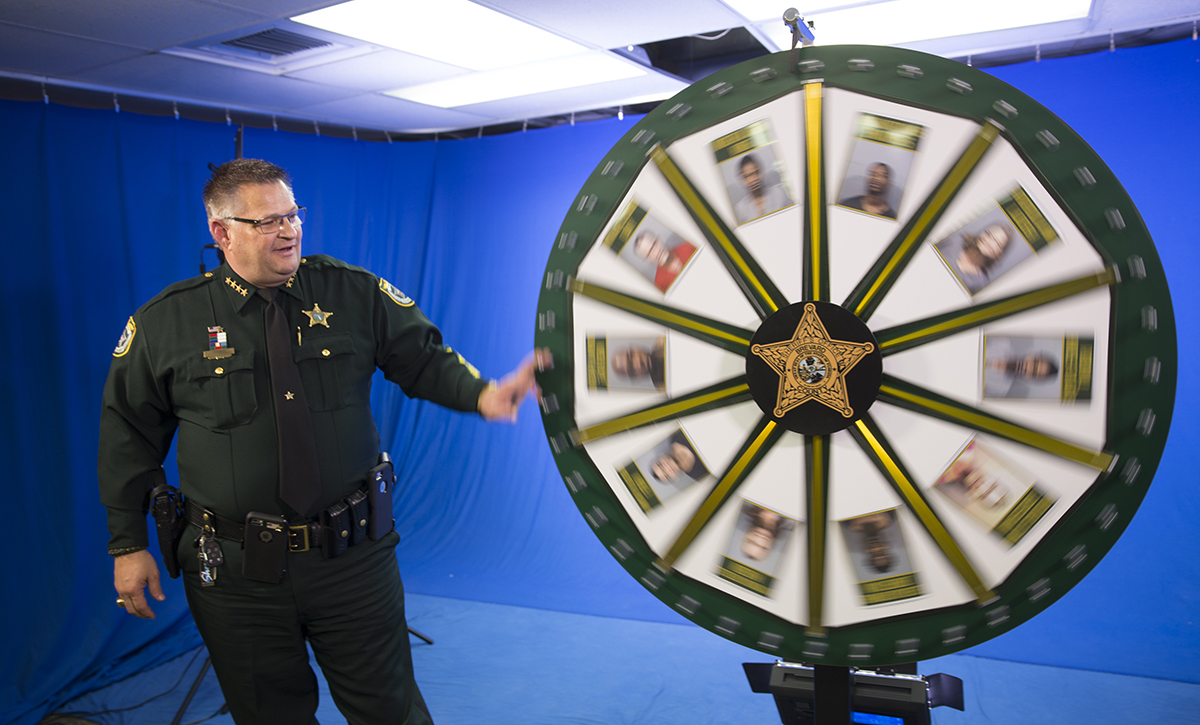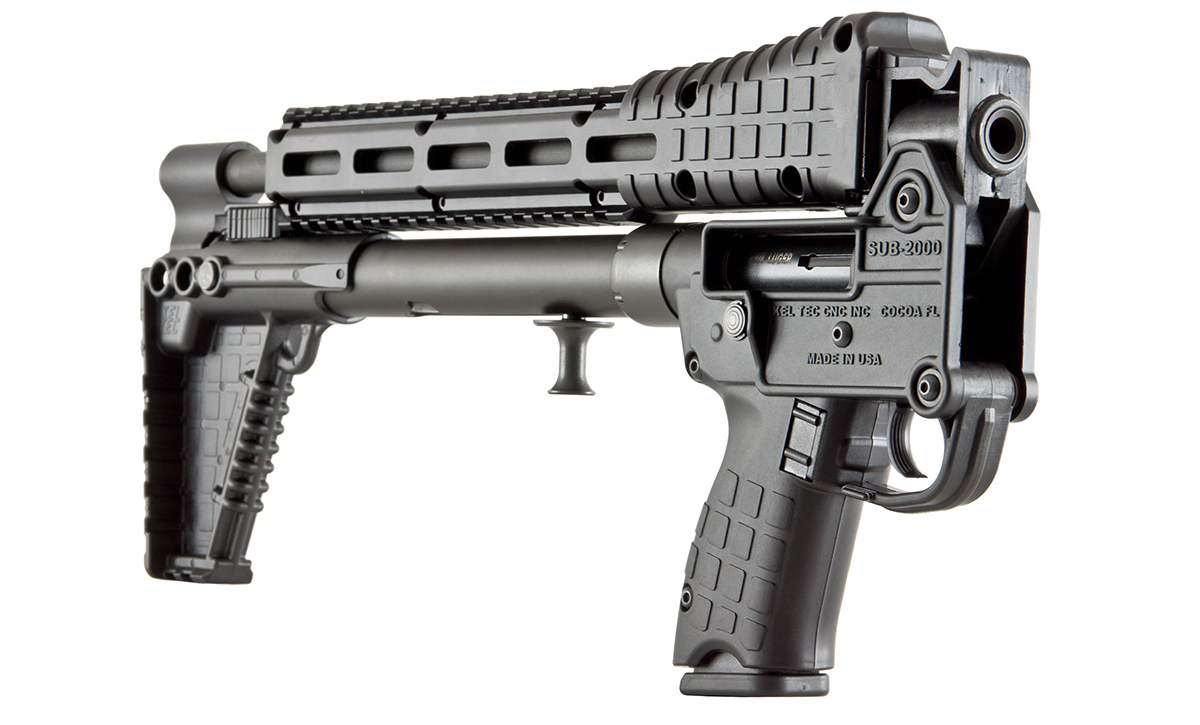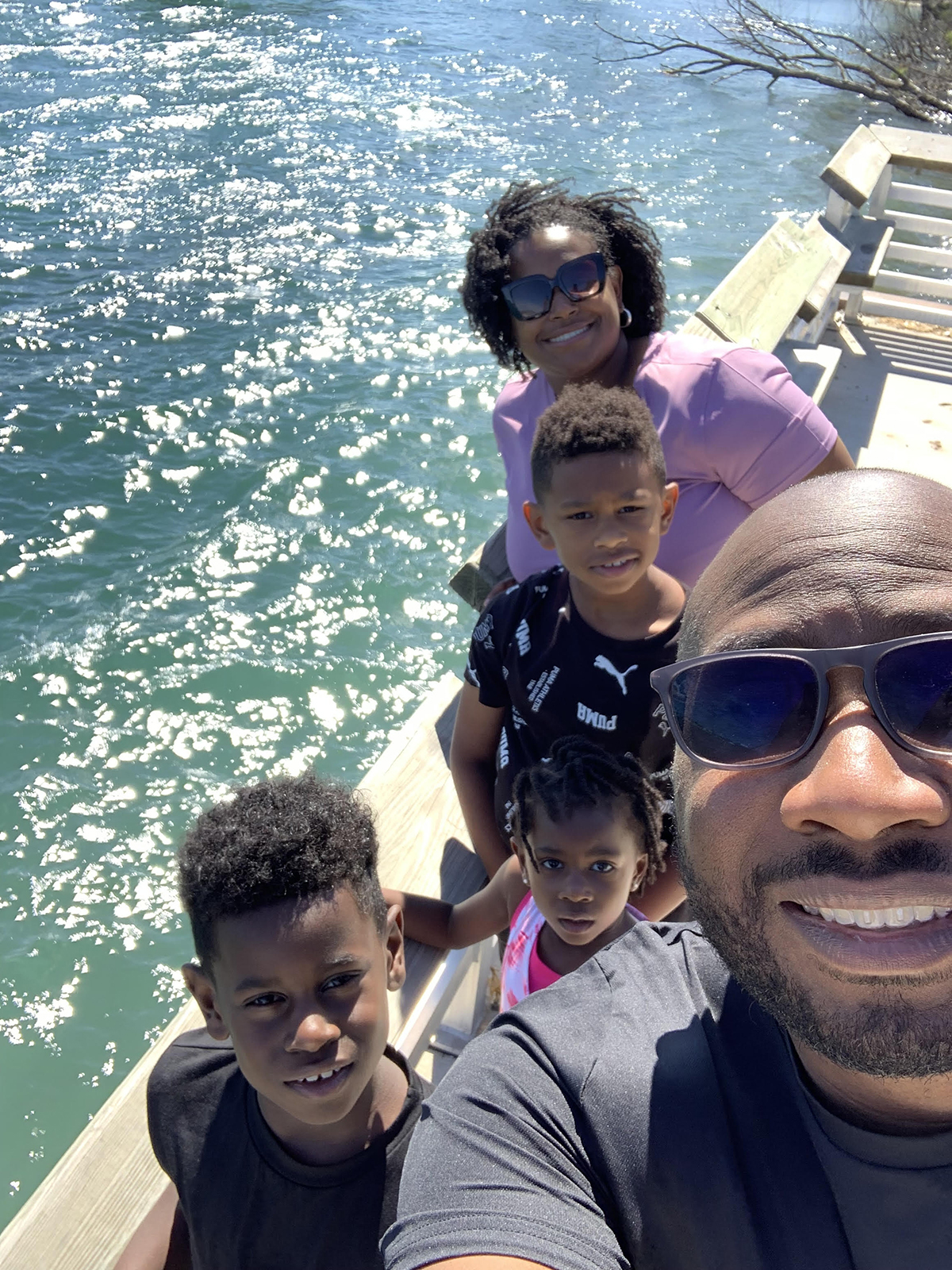New Year, New Fear: Students Return to Schools with Beefed-Up Security Post-Uvalde
As districts nationwide bolster police in schools, a Florida sheriff plans to equip campus cops with collapsible rifles strapped to their chests
By Mark Keierleber | September 12, 2022As children in Brevard County, Florida, shopped for notebooks and pencils for the upcoming school year, Sheriff Wayne Ivey geared up to — as he called it — “win the battle.”
Just two days before students returned to classes at the coastal district east of Orlando, Ivey announced on YouTube plans to equip his team of school-based deputies with collapsible rifles strapped to their chests. The move was a direct response to the mass school shooting in Uvalde, Texas, which resulted in the deaths of 19 children and two teachers and brought a tragic end to the last school year. Now, as students file back into classrooms across the country, this back-to-school season has come with a heightened focus on school security, with districts increasing the presence of police, installing new technology like panic buttons and, in one district, bringing in a gun-detecting dog.
Ivey took the back-to-school security rush further than most, arguing in the video that “if you do not meet violence with violence, you will be violently killed.”
To help campus cops fight back against any would-be gunmen, Ivey announced that his department had ordered 42 SUB2000 rifles with collapsible stocks. Kel-Tec, a Brevard County-based firearm manufacturer, says the chameleon-like semi-automatic 9mm rifle “picks up where handguns leave off,” utilizing a folding carbine with “more pistol magazine options than a cat has lives.” The weapons retail for about $600 each.
“Sun Tzu says in The Art of War that every battle is won or lost before it is ever fought,” said Ivey, a self-described “Constitutional Sheriff,” a group of extremist law enforcement officers with ties to far-right militia groups. “What Sun Tzu meant was that you must outsmart, out strategize, outtrain and out prepare your opponent long before the battle is ever fought.”
Mass school shootings have long motivated efforts to bolster the ranks of campus cops and school security, yet as the tragedies continue unabated, there’s little evidence to suggest the strategies are effective in mitigating or preventing bloodshed. Ben Fisher, an associate professor at the University of Wisconsin whose research focuses on the intersection of education and criminal justice, questioned the efficacy of rifle-toting school resource officers and other school-hardening measures.
“It seems to me like yet another overreaction to the issue of gun violence in schools, one that feels like putting a Band-Aid on a problem that keeps happening rather than addressing the source,” Fisher said.
In Uvalde, a close-knit, predominantly Hispanic town still reeling from the May rampage, students returned last week to buildings with 8-foot “non-scalable” perimeter fences, new surveillance cameras and upgraded doors and locks after the security apparatus at Robb Elementary School was criticized for a fatal collapse at multiple levels. Meanwhile, the state Department of Public Safety stationed more than 30 officers in Uvalde schools at the district’s request.
The changes come after a legislative investigation into the Uvalde shooting found “systemic failures and egregious poor decision making,” including a culture where doors were routinely left unlocked and a disorganized, chaotic police response. In total, 376 law enforcement officers from the local, state and federal levels — many of them heavily armed — descended on the campus but failed to subdue the gunman for more than an hour, a delay that may have cost lives. Last month, the Uvalde school board fired Pete Arredondo, the disgraced chief of the district’s tiny police force, and officials began to conduct “intruder detection audits” at every district across Texas. Last week, state officials announced an investigation into the actions of five Texas Department of Public Safety officers who responded to the shooting, two of whom have been suspended.
The school security rush this summer stretched across every corner of the country. In Ohio, lawmakers passed a policy that allows teachers to carry guns in class after just 24 hours of training. In Marion County, Florida, the sheriff’s office adopted K-9 Alibi — a German short-haired pointer that was trained to sniff out firearms and ammunition on campuses. At America’s largest school district, in New York City, officials last week announced plans to accelerate the hiring and training of additional unarmed school safety agents and enhance emergency preparedness training for school leaders. It also conducted audits of 1,400 campuses, identifying some 1,300 issues with security features like door locks, panic buttons and public address systems, pledging all would be fixed when schools opened Sept. 8.
In late June, President Joe Biden signed into law the nation’s first new gun control measures in 30 years, which include an additional $300 million in federal grants for campus security while also allocating more money for student mental health services.
Meanwhile, Ivey said the in-your-face weaponry being deployed in Brevard County Schools was meant to send a message, offering a “tactical appearance that clearly signifies that we mean business.”
Yet, the rifles were nowhere to be found on students’ first day of school on Aug. 10. Activists with the local group Families for Safe Schools surveyed parents from across the county about whether they’d seen school-based officers with the new rifles and “so far it’s been a resounding no,” said Jabari Hosey, the group’s president and a father of three elementary school-aged children in the district.
“It’s just a joke,” said Hosey, who favors armed police in schools but believes the move to equip them with rifles is a step too far. “He put the cart before the horse. Apparently they don’t have all of the equipment they need.”
In an interview, sheriff’s office spokesperson Tod Goodyear acknowledged the rifles hadn’t yet been implemented but will “probably roll out in stages.”
“It may have been announced out a little bit before everything was really ready,” said Goodyear, who blamed the delay partly on the need to train deputies on how to use the weapons. “All of the rifles weren’t produced and all of that, so that may be a little bit of the holdup.”

‘Do something’
The rush to harden schools post-Uvalde is, in many ways, the continuation of a decades-long trend. Mass school shootings — which are devastating but statistically rare — have consistently prompted increases in school-based police and security infrastructure.
School security and policing measures generally see widespread support from the public. A recent poll by the education nonprofit PDK International found a resounding 80% of adults favor the presence of armed police in schools, including 94% of Republicans and 70% of Democrats.
Whether such efforts make kids safer, however, remains a contentious debate. Existing research “does not, as a whole, yield support for school policing as an effective strategy to improve safety and security,” the National Institute of Justice, the Department of Justice’s research arm, concluded in a February report. Similarly, there’s a dearth of research to suggest that school hardening efforts have made schools safer, according to an in-depth report of security technology by researchers at Johns Hopkins University. As the tragedies generate headlines and fierce political debates, local education officials often face significant pressure to act — often on quick timelines.
“If horrific enough, these incidents can lead to increases in funding with a short spending window,” the Johns Hopkins report notes. “This curbs the ability of districts to conduct even limited evaluation and frequently results in the purchase of technology to demonstrate a strong commitment to ‘doing something.’”
The school security industry was valued at $3.1 billion in 2021 with business growth largely dependent on the frequency and severity of mass school shootings, according to a recent report by the market research firm Omdia.
While armed police have become a regular presence in U.S. schools, officers are generally equipped with pistols, a reality their proponents argue leaves campus cops at a tactical disadvantage during active shootings. That has led to a push, in Brevard County and elsewhere, to fight firepower with firepower. Leading supporters of school-based police say the development is necessary to ensure officers aren’t out-gunned, but critics say it’s the latest escalation of school militarization and could put students at greater risk of harm.
The collapsible stock on the rifles being deployed in Brevard County schools puts the deputies “on par with what we’re facing,” without being overly cumbersome, sheriff spokesperson Goodyear said. Goodyear went a step further in contemplating the everyday drawbacks to arming school police with heavy weaponry, including AR-15s, the assault-style rifle favored by many mass shooters.
“Unless you go down to a submachine gun, maybe you could carry that, but then now you’re talking about putting an automatic rifle into somebody’s hands,” Goodyear said. “But with an AR-15 or along those lines of that type of weapon, it’s a fairly large weapon and the only way you can carry it is on a sling over your shoulder. It’s not practical, your hands aren’t free, it’s going to get in the way.”
In Madison County, North Carolina, the sheriff found a compromise, announcing plans in August to store AR-15 rifles in safes at each of the county’s six campuses — a move that gun control advocates have called “absolute insanity.” But Sheriff Buddy Harwood said the semi-automatic rifles were critical to keep kids safe.
“Having just a deputy armed with a handgun isn’t enough to stop these animals,” Harwood said in a Facebook video. With the AR-15s, “my school resource officers will not have to wait, retreat or have to leave the situation to get the weaponry to deal with the threat.”
The approaches in Brevard and Madison counties each have pros and cons, said Mo Canady, executive director of the Alabama-based National Association of School Resource Officers.
“I’m not sure that, as a society, we’re generally ready to see law enforcement officers on a consistent basis walking around with a long gun strapped onto one shoulder” while patrolling school hallways, he said. Storing rifles in safes gives school-based police additional weaponry during an active shooting — but only if they have a chance to retrieve them. While he opposes giving school-based officers an “overly militaristic look,” he said a collapsible rifle like the Kel-Tec could be a “happy medium” if it’s “not something that’s sticking out there obvious all of the time.”
But he said that rifles, which are generally more accurate than pistols, could grow more common as schools continue to be confronted by heavily armed gunmen.
“If you have to take a shot in a school environment,” he said, “you’d darn well better hit your target.”

‘A militarized vibe’
Kel-Tec markets its collapsible SUB2000 rifle for its convenience, noting on the company website that “it tucks away nicely in situations where space is limited, but it’s quick to deploy in situations where time is of the essence.”
But the same features that could make it an attractive option for school-based police could be exploited by mass shooters. In fact, the weapon has already made an appearance at multiple crime scenes. After a gunman opened fire on an Independence Day parade in Highland Park, Illinois with an AR-15 style semi-automatic rifle, authorities found the suspect also had a SUB2000 stashed in his car. Last year, a student at Daytona’s Embry-Riddle Aeronautical University — just 60 miles north of the Kel-Tec headquarters in Cocoa — was arrested and accused of plotting to “enact a Columbine” on campus. When police stopped the suspect outside his apartment, he reportedly had a SUB2000 concealed in his backpack that he’d recently purchased on Facebook Marketplace.
Kel-Tec executives didn’t respond to requests for comment.

Hosey, of the Brevard Families for Safe Schools group, said he generally supports school-based police, but he and other parents were caught off guard when the sheriff announced the new Kel-Tecs.
“It gave us a militarized vibe,” he said, and could lead students to fear their school resource officers because people often associate heavily armed police officers with active-shooter situations. “What we don’t want is kids to see this and assume that they’re in danger and that there’s an imminent threat.”
When asked about the presence of rifles in Brevard County schools, district spokesperson Russell Bruhn said in an email that “the sheriff’s office is our security expert,” and declined to comment further.
School-based police have long been positioned as members of school communities who foster positive relationships with students. But having a rifle so visibly present on deputies’ chests sends “messages about aggression and the potential for violence when we know that violence in schools, especially with guns, is exceedingly rare,” said Fisher of the University of Wisconsin.
In fact, there’s a lack of research to suggest that a school shooting was particularly fatal because campus police lacked “military weaponry,” said attorney Miriam Rollin, a director at the National Center for Youth Law. Despite the police failures in Uvalde, she said the push to arm school-based officers with rifles is just the latest escalation in campus hardening and isn’t a far leap from “tanks going down school hallways.”
“Generally with an arms race, nobody wins,” Rollin said. “I have to say, this is no exception.”
Get stories like these delivered straight to your inbox. Sign up for The 74 Newsletter

